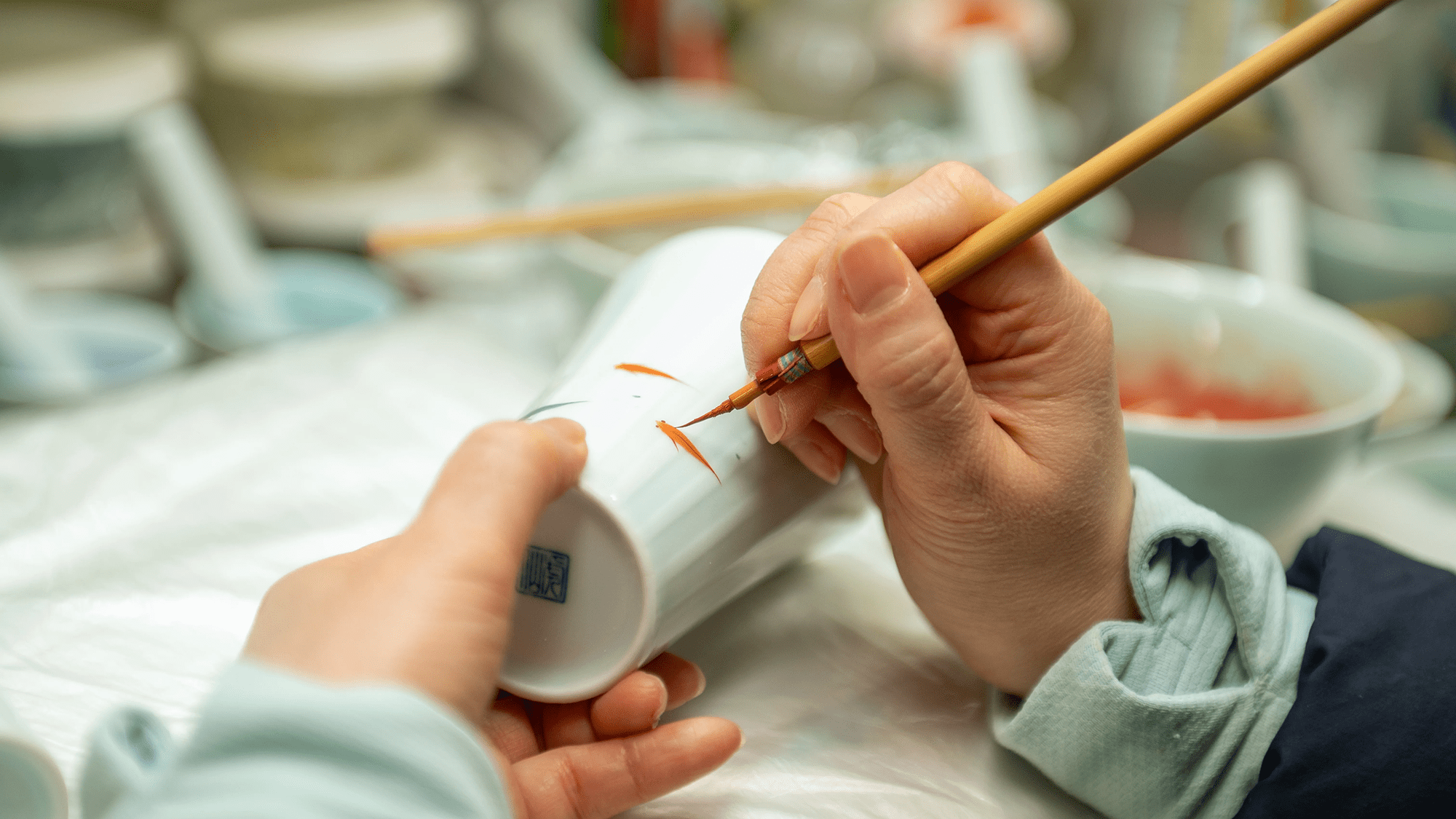
Kosen Kiln's Workshop: A Magical Mystery Tour of Nabeshima Celadon
Written by Team MUSUBI
Nestled amidst the lush greenery of Okawachiyama, just a fifteen-minute drive from the town center, lies Kosen Kiln's workshop, a sanctuary where the art of Nabeshima celadon is meticulously preserved and passed down through generations. On this special occasion, we were warmly welcomed by Kawasoe Takahiko, the kiln master, who graciously opened the doors to his world of exquisite craftsmanship.
The kiln's current location holds a poignant story of resilience and adaptation. Once situated higher up the hill from the Kosen Kiln Gallery , it was tragically struck by the devastating flood of 1973. Undeterred, the kiln was relocated to its present site in 1974, where it has continued to flourish as a beacon of artistry.

Table of Contents
Celadon Glazing


This stone is crushed using a device called a stamp mill and mixed with well water to create the glaze.



Medaka Series

However, this series comes with its challenges. Plates with a flat bottom and no foot often crack after painting and firing.

"While this issue does not arise with mugs or other designs," Kawasoe explains, "the Medaka series' unique plate shape seems particularly susceptible to cracking. We are currently investigating the cause, and this remains a significant challenge in the production of this series."
Even for Kawasoe, a seasoned master of Nabeshima celadon, the art form's complexities present ongoing difficulties, underscoring the delicate and intricate nature of this craft. Yet, it is precisely these obstacles that enhance the mystique of Nabeshima celadon, emphasizing the extensive knowledge and skill needed to produce such exquisite creations.
Firing at Kosen Kiln

"Depending on the season, the pressure adjustments vary. Nowadays, most kilns are automated, but because we deal with celadon, we must make adjustments based on the specific conditions at the time," Kawasoe explains.


Further back in the room, there is also a smaller kiln used for prototypes.
"Whether it's creating original pieces for MUSUBI KILN or tackling other projects, having a test kiln allows us to work quickly, which is one of my strengths," Kawasoe happily shares.

Their work, a testament to the delicate balance of artistry and technical expertise, defies automation. It is in this simplicity that lies the true complexity and allure of Kosen Kiln's artistry.

As we held a piece of Kosen Kiln's Nabeshima celadon, we felt not merely an object but a story, a legacy of passion, perseverance, and artistic brilliance. It is a tangible reminder of the exquisiteness that emerges when human hands and minds collaborate with the elements, transforming humble clay into objects of timeless elegance and enduring value.
We believe that anyone who experiences a piece from Kosen Kiln will immediately recognize and appreciate its distinct charm.







Leave a comment
This site is protected by hCaptcha and the hCaptcha Privacy Policy and Terms of Service apply.